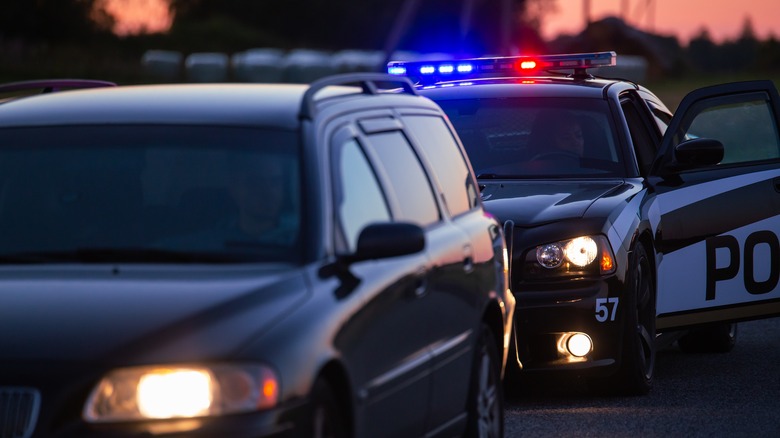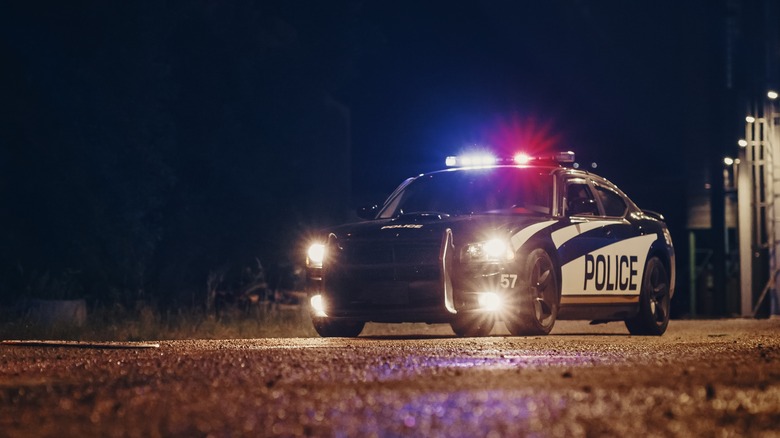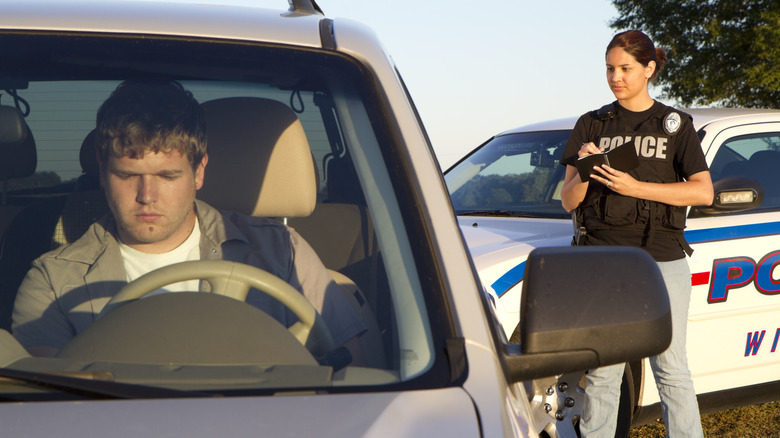
Gorodenkoff/Shutterstock
Traffic stops are a familiar reality of a motorist’s life. According to Stanford University’s Stanford Open Policing Project, there are around 20 million such stops every year on roads in the United States, or approximately 50,000 (on average) every day. While these can be entirely routine stops of perfectly law-abiding drivers, there’s no denying that they can be nerve-wracking. If you fail to use an app that could save you from being pulled over, it could happen to you, too.
«Why me,» you might think. «What have I done? Why did the officer touch my tail lights as they approached the vehicle?» In the moment during a stop, a motorist’s mind might be full of questions. We can’t offer any answers for the first two, but as for the latter, we have some intriguing insight for you.
The taillight touch may seem to be an insignificant motion you’d barely notice, but it’s actually been a very important part of the stop — and the job — for some time. Here’s why police officers do this when they pull over a vehicle, as well as how the meaning and impact of the action has changed over the years as technology has become more prominent.
Why do police officers do this?

Gorodenkoff/Shutterstock
There are some practices you might see officers engaging in on cop shows and wonder whether the real-life police do the same. The tail light touch is one example of an action they really did and do perform. During a traffic stop, the officer will first request that a given vehicle pull over. According to Cornell Law School, they may do so if they have «reasonable suspicion» that, for instance, the driver doesn’t have the proper documentation, or if there has been a traffic offense.
Exiting their own vehicles and approaching the driver, they may touch the back of the vehicle in question. Trooper Steve Montiero, of ClickOrlando’s Ask Trooper Steve series (which breaks down complex regulations regarding driving in the Orlando area), explains the twofold reason for this. The simple action, Montiero states, leaves identifying prints on the vehicle: «In case the driver decided to flee the scene, or if something happened to that officer, it ties both the vehicle and the officer together.»
In addition to that, it’s a quick security check in another way. Just as you might tap the refrigerator door as you pass to ensure you remembered to fully close it last time, Montiero explains that, in this context, «you want to make sure that no one is about to jump out of the trunk and that it’s properly secured.»
This is no mere superstition or anything like that. Tail light safety is paramount.
Protecting the police officer, protecting the driver

Racheldonahue/Getty Images
Now, with the proliferation of police body cameras, cameras in the vehicle itself, and the monitoring of the roads in general, it may be unnecessary to collect fingerprint evidence to prove that a given officer had stopped a given vehicle. Nonetheless, for the safety of both parties involved in a traffic stop, precautions must be taken.
In August 2014, Maryland’s Ridgely Police Department issued an update document underlining its Procedures For Reporting Traffic Stops. These regulations made it quite clear just why such safety precautions may be necessary, stating that «conducting a traffic stop is one the most dangerous tasks as a Law Enforcement Professional.» While it’s natural that both vehicles need to find places to safely pull over on the road, officers are further requested to «offset the patrol vehicle in a matter such that half of their vehicle is behind the violator’s vehicle at a distance of 15′ to 22′» in the Ridgely Police Department’s regulations from the time.
Tail light touching may not be such a regulation, nor as «necessary» now that roads and interactions with the police are so heavily monitored. It may simply be more habitual on the part of experienced officers. Whatever the case, it’s a simple yet brilliant little technique. Officers who do so won’t dirty your tail lights, but cleaning them along with your headlights can be invaluable anyway.